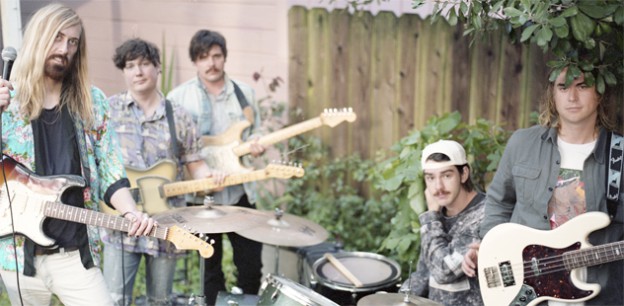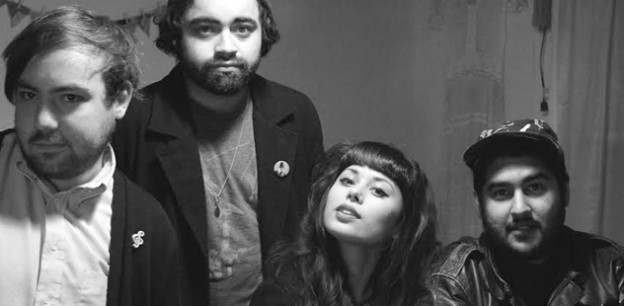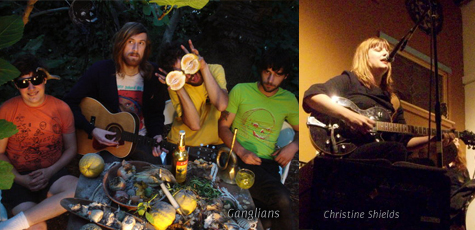Ex-Ganglians member Kyle Hoover on the first album from his new group, Tiaras
All eras are defined by the fact that, eventually, they will end. There can be no Summer of Love Without a Winter of Discontent; no Woodstock without an Altamont; no old guard without a new wave; no lo-fi renaissance without a hi-fi takeover. Tiaras, a San Francisco rock outfit forged from the remnants of other groups (Blasted Canyons, Fine Steps, Sacramento’s own Ganglians), is starting the year by releasing a full-length illustration of this principle. The self-titled debut album, out Jan. 14, 2015, is a clear step away from the modes and methods characterizing the earlier work of its musicians. Where Ganglians once stood for a wild, heat-shimmery psych pop indebted to bands of the ‘60s, Tiaras glides—not leaps—further into music history (say, about two decades), emerging into a clearer, moodier intersection of mid-‘80s jangle-pop and new wave. Whatever the eras and styles that reverberate in Tiaras’ music, a few things are clear: their melodies are strong, their production is crisp and Tiaras may be one of the first great rock albums of 2015.
To get a deeper insight into the new record and its prehistory, we dialed up guitarist Kyle Hoover, who was spending his weekend hanging out in the illustrious Haight-Ashbury neighborhood of San Francisco. When considering the changes his band has been through, I wondered beforehand: how much of a hold does the past still have on that place? Does the feverish, acid-drenched zeitgeist of yesteryear still contain a slight hold on the City by the Bay? As numerous other bands from the local scene begin to decamp for other horizons, we can tell a lot about the current landscape from the musicians who have opted to stay. The music of Tiaras, for one, seems well suited to its locale. While traversing the bittersweet highs and lows of standout track “In the Room,” you can imagine the swift changes of elevation and climate one comes across while traveling through the city: the top of a tower, the bottom of a hill; burning sunshine and bone-chilling fog crowding into a single moment.
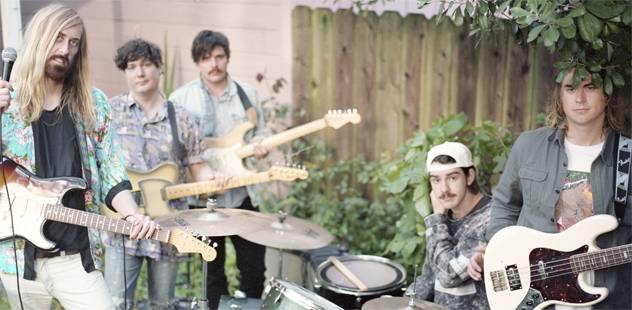
You’ve mentioned before that you’ve been living in the Excelsior area of San Francisco, how it’s fertile creative ground, but a lot of the old guard are moving south for greener pastures. What’s your point of view on these changes?
I’d say the curtains have been drawn back a little bit. I was joking around with my bandmates about the “endless summer of lo-fi ‘09.” It was this big thing—lo-fi garage, it was huge, it was everywhere. I mean, we were part of that too back in the day, but, I mean, me personally, I got over backing that stuff pretty quickly, and that’s part of the reason for the change. There’s definitely a message that we wanted to send going forward with Tiaras, like, “Alright, we live in San Francisco. We used to be kind of a garage band. Now let’s do something different.” A little more solemn, little more pop-oriented. We just wanted to do something different, and lo and behold, a year later, after the record finally comes out, there’s a bunch of other bands who are sort of shying away from that [lo-fi] scene as well.
A lot of my friends moved away—that’s just how it is. It’s super hard to live in the city. But it’s not the end of the world, there’s still cool stuff. I think if anything, it’s for the better that the garage thing has kind of faded a bit from the spotlight in San Francisco. More room to breed different genres.
The genre shift—going to the hi-fi sound, concentrating on the pop melodies—did you have anything to model yourselves on?
With this record, we definitely wanted to make it sound as good as possible. I’m a fan of using the best of both worlds—digital recording is super convenient and makes for a much less stressful recording environment; however, going analog is beneficial for different sounds. You can have the best of both worlds and get really experimental. With Ganglians, we were always trying to be hi-fi; it just always sounded lo-fi because we didn’t know what the fuck we were doing. But the idea was always to try and sound as good as possible. Genre-wise, the shifts…we just started listening to different stuff. I knew Ryan [frontman for Ganglians, Tiaras] in ‘08, and we were like, “Dude! Pet Sounds!” And the influence of that album is super evident in Ganglians. For the new record, Ryan and I were getting into a lot of weird, obscure ‘80s music, along with the rest of the world, apparently—but I guess that’s just how it goes. We just wanted to disassociate ourselves from our previous sound, which is hard because I still sound like me, and Ryan still sounds like himself. Now we have three other awesome dudes with their own take on things, and I think it works. People aren’t saying we sound like the Beach Boys anymore, so that’s fine.
When you say you all started listening to different stuff, was there anything in particular that you got excited about?
Ryan and I got really into Chrome, which was like this super weird, kind of avant-garde ‘80s rock thing. I don’t even know how to describe it. We’d heard about them from back in the day, but we started listening to them all the time. I personally started listening to a lot of Echo and the Bunnymen…just a lot of weird ‘80s stuff that I knew was good but that I’d never really taken the time to listen to. When the Cleaners from Venus record was reissued a few years ago, that was being played around our house 24/7. That was definitely a record I was super stoked about.
Was there a good deal of downtime between the dissolution of Ganglians and the recording for Tiaras?
Oh yeah, definitely. I think we stopped playing together after our last SXSW, which must have been the spring of 2011. Ryan moved to San Francisco, our drummer moved to Brooklyn, our bassist moved to Oakland and I was stuck in Elk Grove. I was living at my dad’s house for a good eight months until I finally saved up enough money to move in with Ryan in SF.
Did a lot of the ideas for the new group and album come out of that eight-month period?
That would be nice, but definitely not. That was more of like a—I don’t know, we were so worn out. I think at that point, we’d been on the road almost constantly for like a year and a half. We were starting to argue a lot, and it was kinda gnarly. So I was mostly just being miserable in Elk Grove, commuting to Davis with Alex’s [Ganglians drummer] mom every morning. That’s basically what I did. If anything was going on idea-wise during that period of time, it was with Ryan and Antonio in San Francisco while they were jamming together.
It seems collectively like you have decades of band experience—you’ve been in a lot of bands, you kind of know the drill. At this point, is it easier for you to tell when the chemistry is right, or when you’re ready to call it a day?
Yeah, I’d say so. This is probably only my third band, but this time, the songs came together easier. Ganglians was like a shitload of trial and error. That was kind of a turning period, because we were all new to what we were doing. With Tiaras, it was super easy to make things work. I’d say there was a year’s worth of time where we were learning to play with each other. And it wasn’t super natural at first, but now we all understand what we’re trying to do.
Playing TBD this past October was sort of a mini-Sacramento homecoming for you guys. How was the experience?
It was fun! It kind of felt like a Sacramento Burning Man or something. Everyone was walking around with scarves on their face and dust was everywhere. I definitely partied too hard, because I stayed there for the whole weekend. I think we were all hungover for like a week after that.
Finally, how do you feel about Tiaras as a group at this point?
When Tiaras first started, I had known Ryan pretty well from being in Ganglians. I’d known Antonio pretty darn well—I think I’ve known that guy since he was like 16—and I had just met Adam and our bassist Ryan Hansen, so I was getting to know them, and we were figuring out how to play together and what our sound should be like. Needless to say, we’re still fucking with our tone settings and our amps to figure out what sounds we have and stuff like that. But I feel like the songs are getting better, and we’re getting better at writing them.
See Tiaras live at Harlow’s in Sacramento on Feb. 10, 2015. Tiaras will be playing in support of The Dodos. Tickets are $15 and can be purchased through Harlows.com. Doors open at 7 p.m.
Could G. Green Become Sacramento’s Most Loved Band?
G. Green was once the most unpopular band in Sacramento. Originally Andrew Henderson’s bedroom recordings moniker, his solo shows in Sacramento garnered anathema of clandestine ridicule and indifference. There was a time I loathed seeing the name listed on every Hub show and house party, and I wasn’t alone. It was fun to smear G. Green in 2009 and it was excruciating to see them on the verge of amateurish implosion in 2011. Most of you probably still assume G. Green is locked into a static identity as Midtown brats, drunk on youth, and too drunk to do much besides be obnoxiously loud. While we were laughing, when we stopped caring and stopped looking, G. Green quietly became a serviceable indie band, writing songs destined to shed the onus of snotnosed bush leaguers.
Before she became G. Green’s drummer, Liz Liles described the first G. Green show (a one-off lineup consisting of Henderson on guitar and promoter Rick Ele on drums) as horrible and a disservice to the former KDVS DJ’s sterling reputation.
“I thought ‘why is DJ Rick playing with this idiot,’” she said. “Me and whoever I was with, we watched one song and then went into the alley to smoke cigarettes.”
In the greenhorn years of the band, Henderson was the perpetual opener; the sort that would clear a venue, living room or DIY space except for his steadfast cheerleader, DJ Rick.
“I put him in front of audiences, and the awkwardness, the house slippers on his feet, and the most piercing moments of singing were initially a big turnoff to people,” Ele said. “But Andrew seemed totally impervious to disapproval.”
*****
They’re all laughing at you, aka the infamous Capital Bowl show
Mt. St. Mtn. founder and former Mayyors member Mark Kaiser put out G. Green’s first record, Crap Culture, in 2012, but it took time for him to become a backer. In gathering stories of infamous G. Green failures, Kaiser and Liles invoked the West Sacramento Capital Bowl show in 2008 without hesitation. In those days, bands would rent out the events room to play, and according to Kaiser, “trash.” The bill was geared toward trashing the place with Mayyors and Eat Skull (a notoriously self-destructive Portland band), while the G. Green solo set was the black sheep. Liles said she and her friends openly ridiculed the G. Green set. While Kaiser likened the clumsy solo performance as arriving “too late for that mid-’90s Olympia-wrought ‘any art is good art’ vibe.” Henderson was not going to be the next Calvin Johnson.
“Andrew was really young, and looked really drunk and really nervous,” Kaiser said. “He let loose, and I cringed. The show was fun, drunken chaos, all the bands on the bills were renowned for being a wasted mess, but this was excruciating.”
*****
Laughing: from ‘at’ to ‘with’
Liles might have mocked Henderson at first, but one evening he showed up at her Midtown home, then known as the Funcastle, expecting a Thee Oh Sees show. Liles had moved the show to another venue, but the encounter with Henderson sparked a quick friendship. At the time Liles was a—quote, unquote—drummer for experimental groups Sucks and Fatty Acid. Untrained and illiterate to tempo, she began telling Henderson she was G. Green’s new drummer.
Henderson obliged after booking a house show with Kurt Vile, Eat Skull and Ganglians. He had two months to put together an opening band; Liles was the first piece. The remaining guitar parts were filled out by Julian Elorduy (drummer for Mayyors in those days) and Dylan Craver. Two months proved enough and sustained the approval of scene-dad DJ Rick.
“I didn’t really know if the band would continue after that one show,” Henderson said. “Rick loved us and threw us on all these shows and put us on [Operation Restore Maximum Freedom]. Pretty much the reason Liz and I still play music together is because Rick threw us into the whirlwind of the Sacramento music scene at that time.”
Kaiser recalls being at the full lineup’s debut, despite purposely steering clear of solo sets since the bowling alley incident.
“The second time I saw Andrew play it was with this first incarnation of a live band and it was a world of difference,” he said. “It was sloppy and chaotic, but it was fun and there were lots of ‘whoa, if they keep doing that’ moments that had me intrigued.”
Henderson and Liles cherish the times with that early incarnation, but also knew it could never last. Elorduy quit the band after Liles broke up with him for Hella drummer Zach Hill, and was replaced by Brittney Gray on bass. Henderson and Craver were the best of friends and also prone to volatile feuds. Every show and practice was a fun, drunken gathering that flirted with implosion.
“We were so close as friends that none of it mattered if people liked us,” Henderson said. “We were just getting drunk and having fun. Me and Dylan were good friends and then we’d hate each other. He probably quit the band infinity times.”
Before the final nail was put in the original lineup, G. Green enlisted Andy Morin, long before his stint in Death Grips, to record their debut, Crap Culture. A shambolic and lo-fi collection of mad-dash punk songs, Crap Culture captured G. Green at the time—unruly and unpolished, but beneath the caterwaul existed nuggets of pop punk gold. Kaiser compared the record to Superchunk’s No Pocky For Kitty, lauding G. Green for maintaining their live energy on record.
“‘Pool Of Blood’ was the song that made me offer them a record,” he said. “That song was a sign they had something and were capable of growing past the kiddish fun-punk into something bigger.”
Crap Culture arrived late to the cultural trend of low-budget to no-budget albums, home-recorded on junkable equipment. It was recorded in 2010, but did not see release until August 2012. By then contemporaries like Wavves had ditched the intelligible scuzz for pop-punk polished for MTV. Also, by the release of Crap Culture on Mt. St. Mtn., G. Green featured a lineup far superior to the rag-tag group that winged it through the debut.
With replacements Simi Sohota on bass and Mike Morales on guitar, G. Green returned to the studio, paying Robby Moncrieff to record a follow-up at the Hangar. Besides being a friend of the band, Moncrieff was a popular choice having recorded Dirty Projector’s critically praised Bitte Orca and fellow Sacramento band Ganglians’ Still Living. Unfortunately Henderson said the band made the mistake of requesting Moncrieff “make it sound like Woodhouse,” meaning Chris Woodhouse, the Hangar engineer responsible for seminal linchpins like all eight Thee Oh Sees records and the A Frames.
Henderson said, “We didn’t use Robby as he should be used as an engineer. He did the best he could, but it’s not the way Robby works. There was no unifying theme with it. It was just a smathering of shit and it didn’t sound very good.”
The record was scrapped, except for two songs which became the “Funny Insurance” b/w “Sounds Famous” 7-inch. Liles corroborated their poor performance, attributing it less to Moncrieff, and more to the band for it sucking. They entered the studio with songs written by all the members with no vision for the band’s identity.
Liles said, “we’ve had really bad luck recording full records… until now.”

*****
New lineup, new lease…
On June 10, 2013 I drove my then girlfriend’s Altima to Davis to see Parquet Courts, a burgeoning Brooklyn band, and Fine Steps, a new project by Julian Elorduy. G. Green was also on the bill, so I planned to arrive late, still pegging G. Green as the perpetual opener. To my surprise Fine Steps was on when I arrived at the Davis Bike Collective. I caught their last two songs. I grew despondent realizing a full G. Green set stood in the path to Parquet Courts. Who agreed to this bat shit order of operation?
With no beer to drink and no cigarettes to smoke outside, I remained inside conceding that despite my efforts I’d been hoodwinked into a G. Green set. Now, I don’t recall particular songs from the set in that blazing, claustrophobic bike shop, but I do know that’s the night I stopped laughing at G. Green. The additions of Sohota and Morales gave them chops previously lacking in the dynamic. Liles had become a force, and Henderson’s once pubescent screech had caked enough nicotine on his vocal cords for a second lease on his balls dropping. There’s plenty to love about a band bent on belligerence, but when that same band backs it up with the skills to earn that abandon, they stop being local brats and graduate into a menace worthy of unleashing on the country at large.
This year on the porch of Kupros I confess to the founding members the Parquet Courts show is when I started believing in G. Green. Henderson states it was his birthday that night, while Liles mentions that Parquet Courts opened for them when they played Brooklyn’s storied 285 Kent venue. Both are unphased that I once detested their band. I was never the only one and I wasn’t the only convert either.
Liles said, “A lot of people probably haven’t been taking the time to see us lately because they saw us so many times three years ago and have decided there’s no way we’ve actually progressed.”
Henderson added, “There’s an image that probably still exists in a lot of people’s minds of these weird shitty kids that are drunk all the time and looking for the next party. We’re convincing people who’ve seen it from the beginning that we’re a great band now.”
Liles and Henderson turned 25 this year. Neither member wanted to be pigeonholed to perceptions developed when they were still teenagers. The upcoming Area Codes album was honed on tour, the band delegating a set it would play nightly until the songs were ingrained in their muscle memory. The decision to be professional and treat their live set with care translates to the album, which was recorded by Woodhouse, whose specialty is live tracking, room sound and mic placement. Even a late night of binging on spirits and karaoke at the Distillery couldn’t sandbag their comfort with the songs.
“We finally developed a sound that cut any bullshit,” Henderson said. “We didn’t really know how to make a band sound. In recording with Chris, he just documents what we’re doing.”
But is their scene-dad Rick Ele a proud papa?
“So many Chris Woodhouse productions have that unmistakable Woodhouse touch,” Ele said. “He becomes the fifth Beatle to so many bands, but in the case of Area Codes, I think he really just used his magic to maximize the G. Greenness of this record.”
Kaiser was equally impressed, keeping the band on his Mt. St. Mtn. roster for a second go-round, calling their current incarnation a “quick progression.”
“The new lineup came about and they tightened up both their live presence and song writing. I kept telling Andrew to just pony up the money and record with Woodhouse. He’s the wizard, he knows their sound and knows how to make them sound more like themselves. That’s what they did and this new recording is a huge step forward.”
The night at Kupros we drank enough short-n-talls of Coors Light and Jameson to carry the festivities to the former Funcastle, now also the home of Henderson. I apparently needed to try “tangler,” a moonshine-like infusion engineered by Liz’s boyfriend. Once there it was filmed and failed beer shotguns for the tour promo video, messy blueberry pancakes, and Guided By Voices’ Alien Lanes on the record player. As both made more of a mess than a mouthful in shotgunning the PBRs, I wondered how they ever got the stigma of a party band. Earlier that night Liles insisted they were misunderstood. “We’re not a party punk band, we’re a weird band,” she said. “The record only mentions pizza once!”
“We’re a straight up indie rock band now,” she said.
Most importantly are these last words from Ele, their cheerleader since day one. Watching a solo project from an awkward kid from Folsom become a band after making friends with the girl who laughed at his sets.
“Andrew’s always the heart and soul of the band as voice and chief songwriter, but through these lineup issues, Liz really stepped up to become the band’s leading co-star. They could change lineups 100 more times, and from now on, I’ll always think of Andrew and Liz as G. Green.”
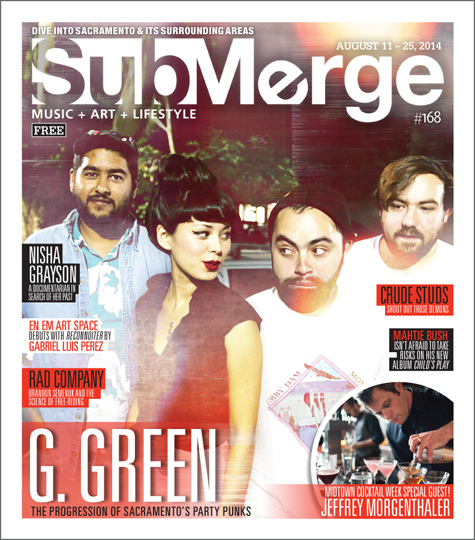
Celebrate the release of Area Codes Saturday, Aug. 30, 2014 at Witch Room (1815 19th St.) with G. Green, Rat Columns, Violent Change and more. The 18-and-over show starts at 8 p.m. and tickets are just $5. Check out
Facebook.com/ggreenband for more info.
Youth Lagoon, TIARAS, Roxanne from the Sandwitches
Harlow’s • Sacramento • Aug. 9, 2013
Recently turned on to Youth Lagoon, I’ve since been pairing their two albums, The Year of Hibernation and Wondrous Bughouse, with my daily morning coffee intake. Their dreamlike, underwater qualities make for an easy transition from half asleep to wide awake.
The brainchild of frontman Trevor Powers, Youth Lagoon hails from Boise, Idaho, and is signed to Fat Possum Records. Trevor describes his songwriting process as a mechanism to sort his thoughts and transfer his fears, and his music is accordingly not dissimilar to a roller coaster ride. Naturally, I was excited to hear about their appearance in Sacramento, booked by Abstract Entertainment, at Harlow’s.
Early into the first set, it was apparent that Youth Lagoon would be enjoying a decent turnout from Sacramento fans—the nightclub was already teeming with hipsters confusingly donning flannel shirts in spite of the warm summer night.
My mother always warned that if I couldn’t say something nice, then stay mum. So I’ll say little about the first act of the show, Roxanne from the Sandwitches. Her off-key soprano narrative atop her acoustic guitar made me feel uncomfortable, like an accidental voyeur peeping a broken-hearted amateur’s cathartic practice session.
After an inordinate amount of time following her exit, a quartet of scraggly musicians in tight jeans emerged nonchalantly from the green room and took the stage. This San Francisco-based, newly formed alliance called TIARAS was promoted as being partly comprised of ex-Ganglians and Fine Steps members. Three electric guitarists, a bassist and their menagerie of pedals created a beautiful, psychedelic soundscape, but TIARAS had an upbeat, danceable quality thanks to the drummer and cadence of the vocalist. The lead singer, Kyle Hoover, who resembled a hungry lion, brushed his long, side-swept blond hair out of his face, requested more reverb on his vocals and cuddled his guitar throughout their well-received set.
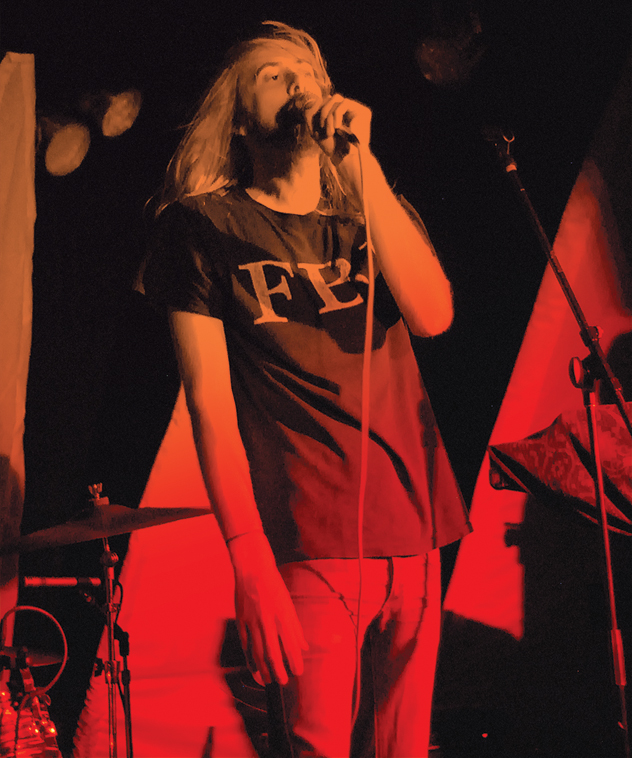
Then came the moment the now completely full house had been awaiting: Youth Lagoon assumed the position within an arc of giant canvas jaws lit up by a rainbow of colors, while exhalations of pink smoke seeped from between
the teeth.
Trevor Powers manned two stacked keyboards, adjacent to which was a tiny organ synthesizer. His touring band was made up of a guitarist, bassist and drummer, too, which sometimes rescinded into the background quietly to let the keys speak alone, to let Trevor sing softly.
Characterized as neo-psychedelia, Americana, indie rock and dream pop, Youth Lagoon’s genre-bending music dynamically transitions many times mid-song from calliope, to hymnal, to spacey, to driving, to noise—to pretty much anywhere on the spectrum of sound—seamlessly, skillfully and strategically, taking the listener on a journey through internal and external galaxies. Trevor beat his fists against his keyboards while playing restless arpeggios, and his band lifted the feet of the audience off the floor with climbing crescendos that culminated in eerie, cosmic plateaus. Then after carrying us across a starry expanse, Youth Lagoon cast us down cliffs, and we plummeted gladly in dramatic dirges before being hypnotically lifted up again.
Just as someone who’d nearly succumbed to submergence, Youth Lagoon left me feeling like I’d sunken into a deep, murky pool, struggled, panicked, gasped for breath—then, mercifully, a cloak of peace draped my consciousness and plunged me into a lucid euphoria. The bony fingers of death wrapped tighter and tighter around my throat until I was about to surrender…then let me go. It feels good to drown, and even better to live to tell about it.
From local bands and beyond, here are Submerge’s favorite albums of 2012, in tweet-friendly format. These albums are certified #awesome!

20) Jessica Pratt
s/t
(Birth Records)
Pratt’s debut of home-recorded, time-capsule folk stood as a brilliant reminder of the beauty in lo-fi love letters.

19) Wife & Son
This That and the Other
(self-released)
A brilliant indie-pop record from one of our favorite new local bands. The suburbs of Sacramento have never sounded so good!
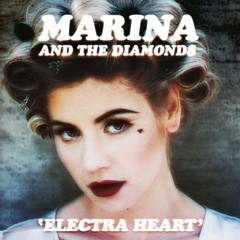
18) Marina and the Diamonds
Electra Heart
(679 Recordings)
Pop anthems with heart and humor for disenfranchised prom queens and introspective home-wreckers.
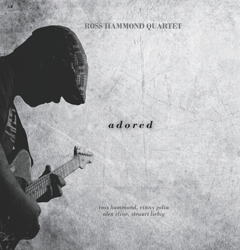
17) The Ross Hammond Quartet
Adored
(Big Weezus Music)
Jazz requires inspiration. The Ross Hammond Quartet’s Adored comes from a budding father’s lullabies fed through free jazz spontaneity.

16) Beach House
Bloom
(Sub Pop)
Called a “dream pop duo,” Beach House records a calming and eerie sound unique to much of the music today.

15) Metz
s/t
(Sub Pop)
Sporadic screaming bursts, fuzzy bass and plenty guitar chaos, this album has ears both assaulted and surrendering over and over.
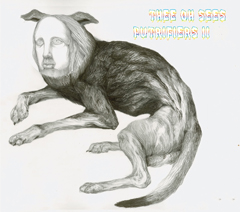
14) Thee Oh Sees
Putrifiers II
(In the Red)
Veteran psych-punk loonies leapt out of the garage and into national consciousness with their liveliest cuts of fuzzy fun.
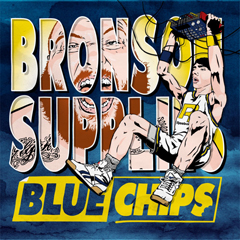
13) Action Bronson and Party Supplies
Blue Chips
(mix tape)
Skillful rapping mixed with humor and bravado over a range of stellar production, and it’s a wrap. It’s a fun album with rewards for mindful ears.

12) Edward Sharpe & the Magnetic Zeros
Here
(Rough Trade)
The perfect band of misfits surpasses all expectations with their second studio album full of charismatic, folk-y love songs and smiles.
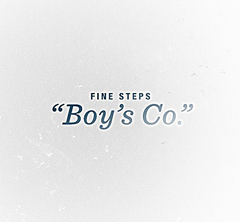
11) Fine Steps
Boy’s Co.
(self-released)
Fine Step’s Boy’s Co. should be on Slumberland. On Captured Tracks. Hell, even Burger. Two self-presses later, Fine Steps gets the glory.
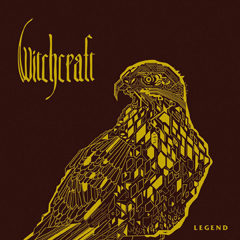
10) Witchcraft
Legend
(Nuclear Blast)
Pure, heavy riff alchemy. Progressive, yet retro. Metal shouldn’t sound this groovy, but we’re glad it does.

9) Japandroids
Celebration Rock
(Polyvinyl Record Co.)
A fitting album title, indeed. Anthemic as all hell, this is a singalong, raise your glass type punk rock record.

8 ) St. Lucia
s/t
(Columbia)
Catchy, dreamy electro-pop fit for a night club or sweaty hipster venue. Leader Jean-Philip Grobler is a pop-music force to be reckoned with.
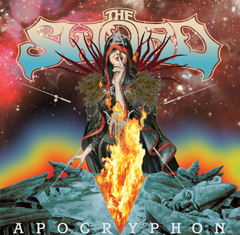
7) The Sword
Apocryphon
(Razor & Tie)
The lords of stoner rock reach new heights on a space-y trip down the heavy metal rabbit hole.
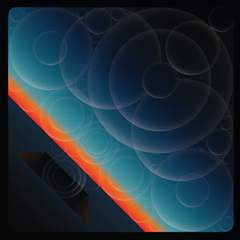
6) The Mars Volta
Noctourniquet
(Warner Bros.)
Nearly three years in the making, Noctourniquet was worth the wait. Sounds exactly like a Volta record should, and that’s why we love it.
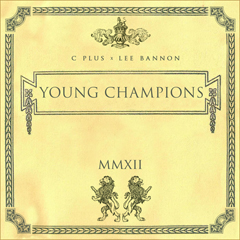
5) C-Plus & Lee Bannon
Young Champions
(self-released)
Two of Sacramento’s finest team up for an epic release. No features, just Plus’ smooth flows over Bannon’s undeniably sick beats. Go cop it!

4) Kendrick Lamar
Good Kid M.A.A.D. City
(Aftermath/Interscope)
Believe the hype. A brave debut, from a bright mind who showed that you can create outside the box and succeed. Truly masterful in every respect.

3) Tame Impala
Lonerism
(Modular)
Lonerism is damn near perfect. It’s a psych album with pop melodies; heavy guitars, intricate drumming, humming keys and an irresistible sonic sheen.
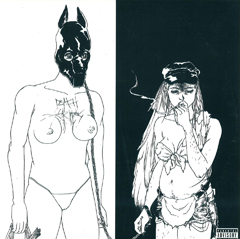
2) Death Grips
The Money Store
(Epic)
Weird, angry, non-imitable experimental hip-hop from Sacramento. Is it rap? Is it punk? What the fuck is it? Don’t ask, turn it up!

1) Solos
Beast of Both Worlds
(Joyful Noise)
The sonic symbiosis of this Aaron Ross/Spencer Seim collaboration explored bold and bizarre realms. Sleeper LP of the year.
2011 was a very successful year for the fine folks over at Verge Center for the Arts, located at 625 S Street in downtown Sacramento. To celebrate reaching a recent Kickstarter goal of $7,500, which is surely no small feat, especially considering the amount of online fundraising campaigns Submerge has seen go by the wayside, VCA is throwing a “Verge Ahead” success party on Saturday, Jan. 21 at 6 p.m. Catch live tunes from local favorites Ganglians, Fine Steps, MOM, Gentleman Surfer, Christine Shields, DJ Scott Soriano and DJ Hailey. Check out a huge art installation from artist collective Future Art Notables called Assorted Spaces, play around on a mini-golf exhibit created by VCA artists, drink delicious brew from local beer maker Ruhstaller or a fresh cup of joe from Insight Coffee. The event is for all ages and open to the public. A $15 cover charge includes two drink tickets. If you donated $25 or more to Verge’s Kickstarter campaign, you’ll be on the will call list. For more information check out Vergeart.com


